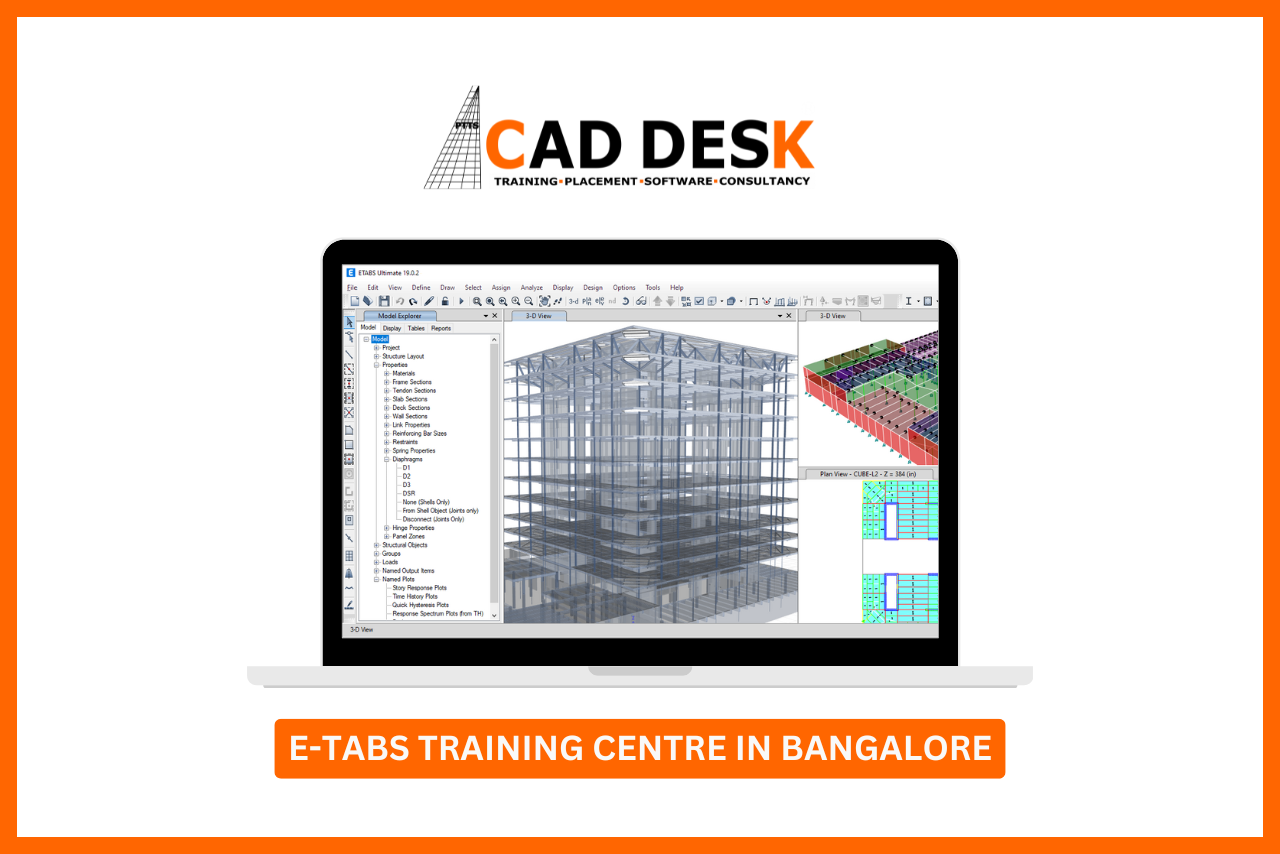
The ETABS course provides an in-depth learning experience for individuals aiming to excel in structural analysis and design. By equipping participants with the skills to effectively utilize this powerful software, the course prepares them for various roles in civil and structural engineering, enabling them to tackle complex engineering challenges in their careers. ETABS is an essential tool for civil and structural engineers, providing advanced capabilities for modeling, analyzing, and designing buildings and structures. Its comprehensive features, user-friendly interface, and compliance with international standards make it a valuable asset for professionals in the field, enabling them to tackle complex engineering challenges with confidence. Used for modeling and designing low to mid-rise buildings, including residential complexes, offices, and shopping malls. ETABS is widely used for assessing and designing structures to withstand seismic forces, ensuring safety in earthquake-prone regions. ETABS is particularly suited for the analysis and design of skyscrapers and other tall buildings, helping engineers address challenges related to lateral loads and structural stability. We are the best E-Tabs training centre in Bangalore.

One of the best Institute for cadd training in banglore with friendly staff and good assistance is provided by manohar sir in placements
It is an intuitive and powerful software tool for confidently analysing complex structures. ETABS help engineers and architects design safe and efficient structures that meet the requirements of their projects, making it a valuable tool for anyone in the construction industry.
ETABS PRODUCTS ARE PROVIDED THROUGH THE ETABS CONSORTIUM AT NO COST TO INDIVIDUAL STAFF/FACULTY AND STUDENTS.
Etabs is a user friendly software and can be learnt within few days. The video tutorials provided are more than enough to start with modeling in Etabs.
ETabs are Finite-Element-Analysis (FEA) software, which means they allow our engineers to model complex buildings as simplified 2D and 3D elements – beams, columns, floors, and walls – which resist dozens of potential loading scenarios and can consist of wood, steel, masonry, or concrete systems.
Analysis can use modal superposition or direct-integration methods, and both can be linear or nonlinear. The nonlinear modal method, also called FNA for Fast Nonlinear Analysis, is extremely efficient and accurate for a wide class of problems.


